by Mike –
The world is indeed a small place and the Internet can make it seem even smaller. I publish an article (and an advertisement) about the custom Offenhauser Engine S/N 165 commissioned by George Tilp, a wealthy race car owner in New Jersey in the 1950s. Shortly thereafter I am contacted by Geoffrey Horton, George Tilp’s nephew who knows quite a lot about his Uncle George and his racing activities.
As you will read George Tilp was instrumental in helping launch the career of one of the greatest American racing drivers of all time, Phil Hill.
Text by Geoffrey Horton
George Tilp was born in Brooklyn, New York on August 26th, 1912. He was the first son of an Austrian father and Danish mother. As a boy, George had a strong work ethic and he was eager to live up to his father’s expectations, so he delivered newspapers and did odd jobs in the neighborhood.
The Tilp family moved to New Jersey after the birth of a daughter in 1914. Another son arrived in 1919. George’s father, J.G. Tilp was a first-class journeyman toolmaker who soon started his own company – making molds for the emerging plastics industry in Newark, New Jersey. At the urging of some of his customers and friends, he also started a metal-stamping business.
George was an outstanding student in high school where he concentrated on chemistry. His father tried to discourage George’s fondness for chemistry in favor of mechanical engineering, and he finally convinced George to become an apprentice toolmaker.
George preferred to work for a company other than his father’s, but in 1936 when the stamping division of his father’s company showed signs of neglect, George assumed leadership of that operation and developed what became the premier metal stamping and deep draw company in the Northeastern United States.
From 1941 to 1945, George’s customers were major contributors to the war effort. After the war, the company’s reputation attracted the attention of many major manufacturers in the U.S., and George’s customers soon ranged from small appliance suppliers to jewelry manufacturers.
Before his marriage in 1938, George was building a modified Ford Model A for oval racing on local dirt tracks. As is often the case, this project was abandoned to concentrate on bringing up a family.
The racing “bug” resurfaced in 1950 when George bought a Jaguar XK120 Drop Head Coupe (DHC). He took full advantage of the power and performance of this car by earning a well-deserved speeding citation for traveling at 120 mph on a local turnpike.
After meeting Walter Hansgen, the local Jaguar dealer who later became a noted international racer, George decided to enter his “Jag” in events sponsored by the Sports Car Club of America (SCCA). Family concerns for his safety soon made it difficult for George to personally drive his car in races, so Hansgen shared the task of driving with a local up-and-coming driver named Randy Pearsall. They had some success, but George wanted more.
In 1952, George bought an Aston Martin DB2-4, and he assigned Hansgen to be its driver. Their success was uneventful in sprint races because of limited power – the Aston was an endurance car.
George decided the car needed more power, so he fitted it with an American Offenhauser 3-liter engine. This gave the car plenty of power and torque, and initially it did quite well, but the Weber carburetors that were added during the engine exchange had a tendency to self-destruct from vibration.
So, the “Offy” engine was removed and put on a shelf. In 1955, George bought a Ferrari 750S Monza #0498M from Ferrari’s East Coast distributor, Luigi Chinetti. As with most racing Ferraris at the time, this particular Monza had already been raced a few times by the factory team. So upon delivery, George totally disassembled and rebuilt the entire car.
The first race for George’s Monza was in Beverly Massachusetts. Luigi Chinetti had suggested that a promising young driver from California pilot the car. So it came to pass that at 10PM one evening in Short Hills New Jersey, George responded to a knock at his front door. Standing in front of him was a dark-haired, 27 year-old fellow by the name of Phil Hill. This meeting heralded the beginning of a 30 year friendship.
At the inaugural SCCA event on the Beverly Municipal Airport racecourse, they won in a display of dominance. George and Phil went on to win all the U.S. races they entered that year. In addition, they scored a significant victory at a major race event in Portugal.
My thanks to:
John Abruzzo, (a cousin) for putting family history into words that creates a colorful rich story.
John Shultz (track historian, Elkhart Lake-Road America) for proofing this writing and encouraging me to make this biography as accurate as possible.
This was originally posted in January 2014.
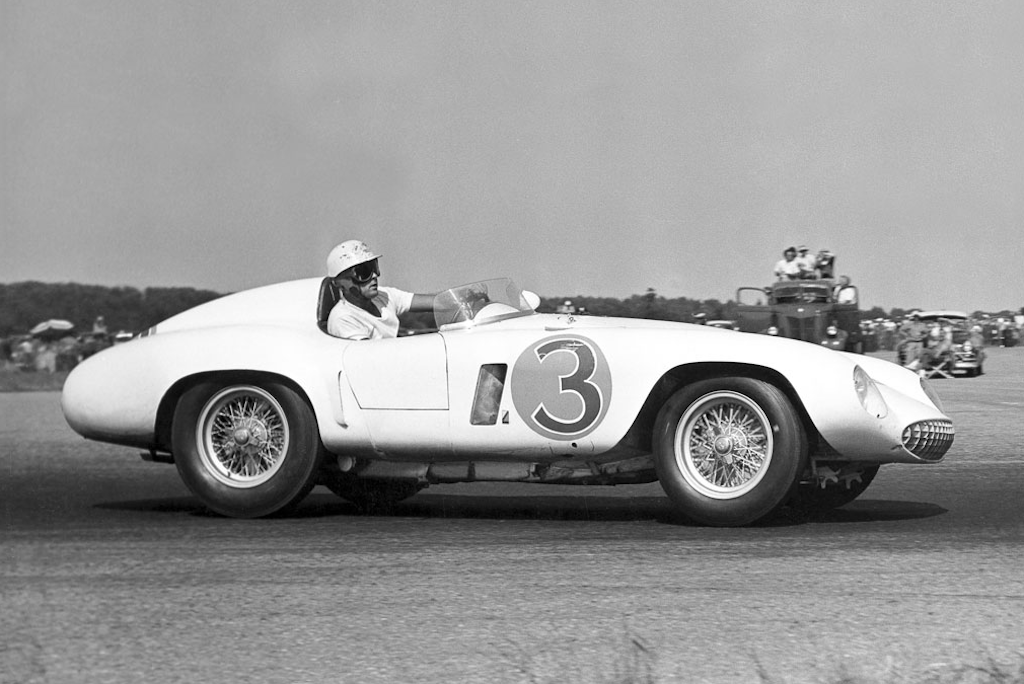
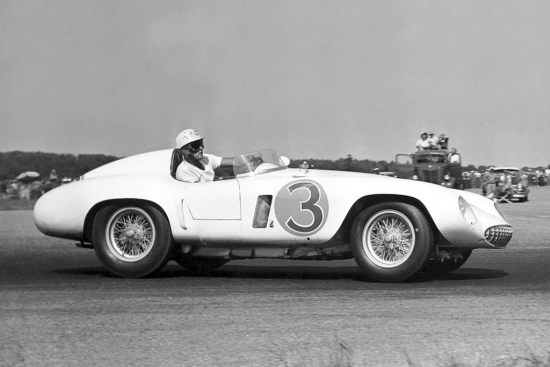
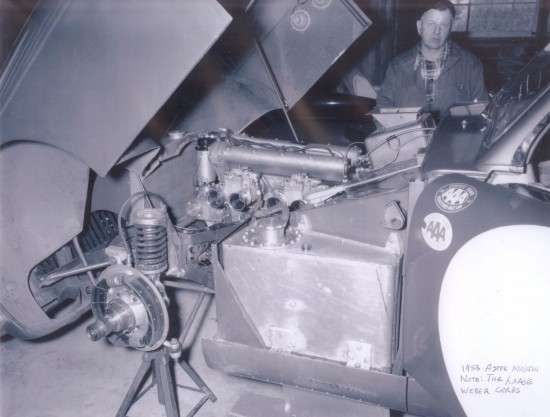
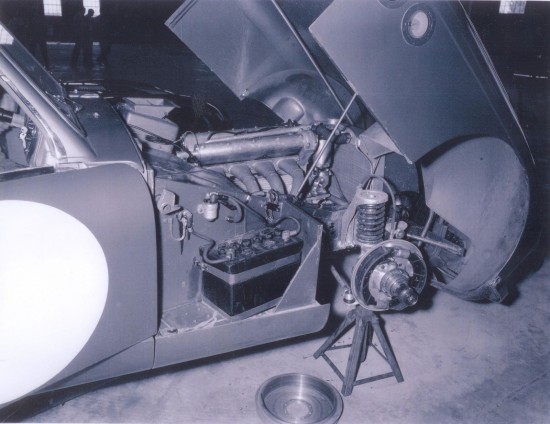
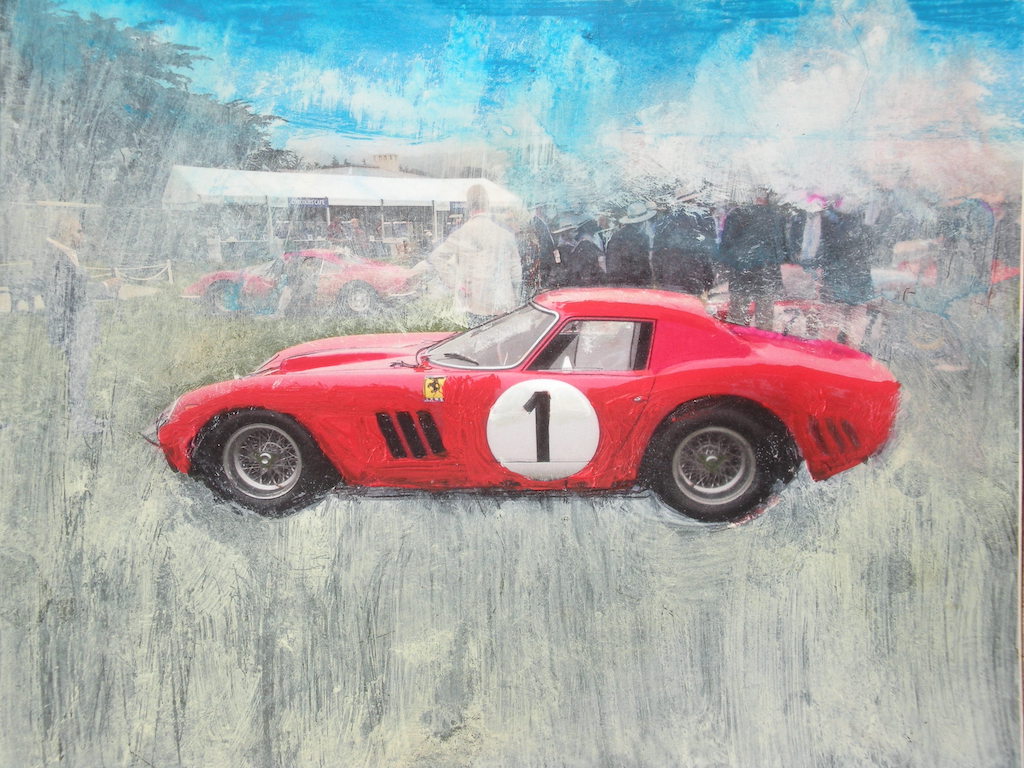

Mike, thanks to you and Mr. Horton for a wonderful read and a great way to start the day!
I worked at J.G.Tilp in 1961 to 1965-6 and remember meeting Phil Hill next door at Tilp Industries. Also remember working with Geoffrey for a short time. They were great times and glad I met so many of the Tilp family.
Lord Bless.
Mr Lucas, Did you know my grandfather, Joe Roder? I understood he was very involved with Mr. Tilp’s racing and, later, classic car restorations. He was responsible for the Packard and Cadillac as well as the Pullman car.
Regards,
Ken Moeltner
Walt Hansgen drove this car at Cumberland, MD in 1955. Does anybody have a picture of Walt driving the car?
I took a picture of the car in the paddock.
It is now with the REVS collection.
Can I get a picture of the car in the paddock?
Thank you so much for this great article. I’ve stumbled upon it while researching the history of the 1939 Packard Twelve Brunn Touring Cabriolet that we recently acquired. The car used to belong to George Tilp, and this story adds a wonderful layer of interest to the history file. Thank you for the efforts it took to compile this story.
Geoffrey I’m Georges nephew. I was part of that restoration–I’d like to talk to you about the Brunn.
johnabruzzo@verizon.net
Mr Abruzzo, I presume you would have been very familiar with my grandfather, Joe Roder? I would like to learn more of his efforts on these classic restorations.
Regards,
Ken Moeltner
Ken
I worked for Joe summers home from collage. He taught me a lot. He was working in the factory installing an automatic spray paint line. I was sort of his apprentice.
I also went with Joe and another guy–Helmut Knecht to a race in Vineland NJ running a Ferrari Mondial with an Offenhauser engine. The car was very fast but as I recall we couldn’t race due to clutch problems. Joe had a lot of experience previously with an Aston Martin with the Offy engine, Problem was the engine vibrated so much it wrecked the carburetors. Joe also was a part time traveling mechanic when my Uncle was racing for Mercedes
in the 300SL coupes. When he was not working on racing stuff he helped restore the Pullman car my cousin Peter restored. Joe was very talented with anything metal or or mechanical. I remember him taking apart the 1934 Packard Brunn prior to a total restoration—and then putting it back together after everything was painted. He was an expert on the Cadillac V 16 and kept it running flawlessly . The Packard with the Brunn body only needed paint and came out beautifully. I think Phil Hill bought it from Peter Tilp after Uncle George died . my email address is johnabruzzo@verizon.net where do you live and how old are you?